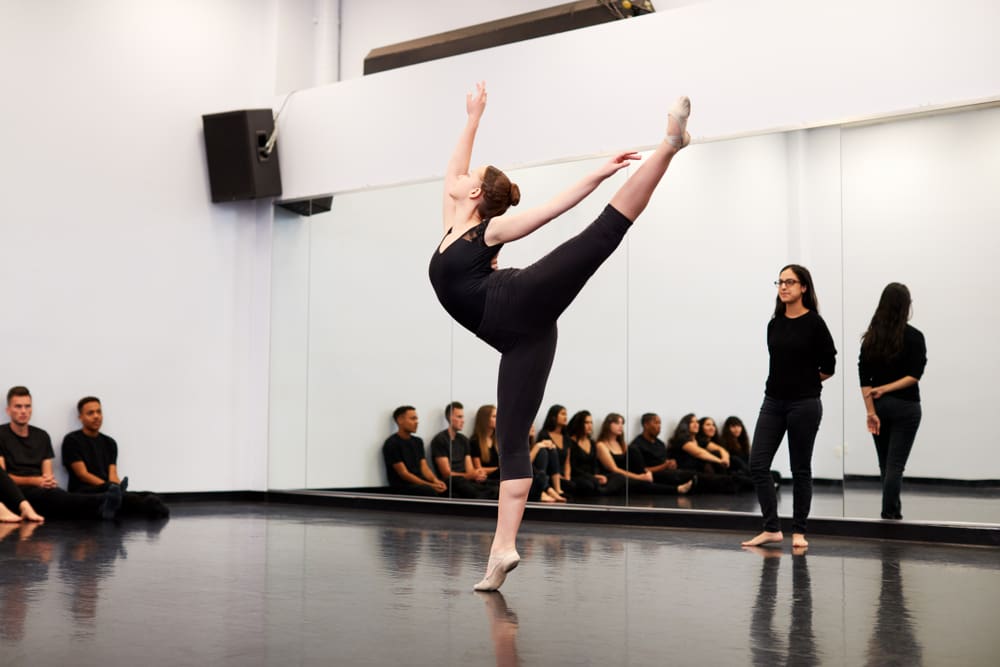Does your college require a portfolio?
And does the student portfolio even matter much in admissions decisions?
Picture this: Your college application isn’t just a list of scores and grades—it’s a canvas for a vibrant display of your unique talents. For many students, especially those applying to arts, athletics, or specialized programs, a student portfolio is essential to achieving this dream. It’s your chance to showcase who you are beyond academics. That’s no small feat.
In this guide, we’ll cover:
- Who should consider a portfolio
- Different types of portfolios and how to build them
- Key questions to keep in mind
- Common pitfalls to avoid
- How to go above and beyond
- Why do colleges require portfolios
Ready? As they say, the best time to plant a tree is yesterday; the next best time to plant a tree is today. So, let’s dig in!
In this article, we’ll explore the essentials of creating college portfolios, including tips, types, and common mistakes, to showcase your unique talents and impress admissions.
Who Should Consider Creating a Student Portfolio?
When a portfolio is required:
First things first: certain college programs require portfolios as part of the application process. Fields like Fine Arts, Music, Theater, and even some competitive athletics programs expect applicants to submit portfolios. A strong portfolio can give your application an edge, helping admissions teams see your dedication and talent.
When a portfolio is optional—but recommended:
Even if not required, a portfolio can help you stand out. If you’re passionate about a hobby, sport, or artistic pursuit, submitting a portfolio might be worth considering. Just remember to ensure that the portfolio meets a high standard; a weak submission could do more harm than good.

Types of Student Portfolios for College and How to Build Them
Each type of portfolio has unique qualities. Let’s explore what makes each one special and how you can put together a compelling submission.
1. Fine Arts Portfolio
- Examples: Painting, Creative Writing, Photography, Sculpture.
- What to Include: Showcase pieces that reflect your skill range and creativity. Colleges want to see versatility—choose works that reveal both technical ability and personal style.
- How to Build It: Select high-quality images of your work, and organize pieces to tell a story. For instance, you might show how your skills have developed over time.
2. Performing Arts Portfolio
- Examples: Singing, Dancing, Theater, Instrumental Music.
- What to Include: Videos or recordings that highlight your talent and versatility. Aim to convey emotional depth, technical skill, and stage presence.
- How to Build It: Record high-quality, well-lit videos in a quiet space. Select clips that represent your range—showing both your strongest and most expressive pieces.
3. Athletics Portfolio
- Examples: Sports recruitment reels, and competition highlights.
- What to Include: Highlight clips showing your skills, teamwork, and sportsmanship. Coaches want to see your level of play, endurance, and mental toughness.
- How to Build It: Create a short highlight reel that captures key moments. Focus on clips that show your strengths, agility, and commitment to your sport.
4. Unusual Extracurricular Portfolios
- Examples: Professional Acting, Olympic-level athletics, Business achievements.
- What to Include: Show off high-level achievements with awards, media coverage, or unique certifications.
- How to Build It: Choose materials that best highlight your unique skills and journey—think of it as telling the story of your achievements.
Practical Questions for Building a Successful Portfolio
Here’s a checklist of essential questions to guide your portfolio process:
- Who to Ask for Feedback:
- Advisors like art teachers, coaches, and mentors can offer constructive critiques. Seek input from those with expertise in your area to ensure your work stands out.
- Where to Create & Store the Portfolio:
- For visual arts, a digital portfolio is often preferred, but physical portfolios can be impressive in person. For digital, consider creating a dedicated website or using a platform like Behance for professional display.
- When to Start Compiling Your Portfolio:
- Starting early in high school gives you time to curate, refine, and improve your portfolio. Avoid last-minute submissions—build your portfolio gradually for the best results.
- When Not to Submit a Portfolio:
- Only submit a portfolio if it enhances your application. If the program doesn’t accept additional materials or if your portfolio isn’t yet ready, it may be better to hold off.
Don’t forget about your portfolio presentation and formatting. A well-organized and professionally presented portfolio can make all the difference in capturing an admissions team’s attention.
Here’s how to ensure your portfolio is polished and easy to navigate:
Choose a clean layout
Whether it’s a digital or physical portfolio, select a layout that emphasizes clarity. Avoid cluttered pages and opt for a clean design that lets each piece stand out.
Label clearly
Ensure each piece is labeled with relevant details, such as the title, date of creation, medium, and any brief context if needed. This helps guide viewers and provides important insights at a glance.
Maintain consistent formatting throughout
Consistency in fonts, colors, and image sizes makes your portfolio more cohesive. Choose a unified style that reflects your personality but stays professional.

Common Mistakes to Avoid in Student Portfolios
Creating a standout college portfolio involves showcasing your best work, but it’s easy to make mistakes along the way. Here are some common pitfalls to avoid for each portfolio type.
1. Fine Arts Portfolio Mistakes
- Overcrowding with Similar Works: Including multiple similar pieces can dilute the impact of your portfolio. Instead, focus on variety and highlight pieces that show diverse skills and themes.
- Low-Quality Images: Poorly photographed or scanned images fail to capture your art’s true quality. Use high-resolution photos with proper lighting to ensure your work looks its best.
- Too Many Incomplete or Experimental Works: Colleges are interested in polished, finished pieces that reflect your highest level of skill. Limit the number of sketches or studies unless they add value.
2. Performing Arts Portfolio Mistakes
- Including Poor-Quality Audio or Video: The quality of your recording matters. Use a professional setup if possible, or ensure your video is clear, well-lit, and has minimal background noise.
- Submitting Clips That Are Too Long: Admissions teams don’t have time for lengthy performances. Select shorter clips (1-2 minutes) that showcase your talent and range effectively.
- Focusing Too Narrowly on One Style: Even if you excel in one genre (e.g., classical piano), show some versatility. Including pieces that demonstrate range can give a fuller picture of your talent.
3. Athletics Portfolio Mistakes
- Overly Long Highlight Reels: Coaches often skim through reels quickly, so get to the highlights fast. Aim for a 3-5 minute reel that captures your strengths.
- Failing to Showcase Teamwork: College coaches want team players. Avoid solo or isolated clips—include moments that highlight how you collaborate and contribute to the team.
- Clips with Distracting Backgrounds: Make sure the setting is appropriate and distraction-free. Clips taken from crowded games or chaotic practice fields can detract from your skills.
4. Unusual Extracurricular Portfolio Mistakes
- Mixing Unrelated Activities: For portfolios covering unique achievements, keep the focus narrow. If you’re showcasing professional acting, for instance, avoid including unrelated hobbies or non-professional work.
- Too Much Personal Information: While a brief narrative is helpful, be concise and professional. Avoid including excessive backstory or unrelated personal experiences.
- Over-emphasis on Awards without Context: Awards are impressive, but admissions teams appreciate context. Briefly explain the significance of each achievement, especially if it’s unique.
Universal Portfolio Mistakes to Avoid
Regardless of the portfolio type, these are some universal mistakes students often make:
- Last-Minute Compilation: Rushing a portfolio will show. Start early, gather feedback, and give yourself time to make adjustments.
- Inconsistent Quality: Every piece you include should reflect a high level of skill and preparation. Avoid adding works that don’t meet your overall quality standard, even if they’re sentimental favorites.
- Lack of Clear Labeling and Organization: Ensure each piece is clearly labeled and organized in a way that’s easy to follow. Disorganization can confuse admissions teams and detract from your presentation.
- Ignoring College-Specific Requirements: Each college may have unique portfolio guidelines. Review the requirements for each program carefully and tailor your submission to meet them.
By avoiding these mistakes, your portfolio will present a polished, focused, and memorable impression, helping you stand out for all the right reasons.

Above and Beyond: Storytelling in Your Portfolio
If you want to go the extra mile—that is to say, above and beyond the call of duty—there is more you can consider. While each piece in your portfolio should stand on its own, a well-constructed narrative that ties everything together can make your submission even more compelling. Here’s why storytelling matters and how to incorporate it:
Showcase personal growth
Admissions teams appreciate portfolios that illustrate how your skills have evolved. Arrange your pieces to reflect progress, showing early works followed by more advanced pieces to highlight dedication and improvement over time.
Convey a personal vision
A strong narrative can emphasize what drives your passion. Whether it’s a commitment to social issues, a fascination with a particular art form, or perseverance in athletics, infusing a clear vision throughout your portfolio adds depth that will set you apart.
Connect your works
Even if your portfolio includes different styles or types of works, use brief descriptions or an artist’s statement to draw connections between them. This helps create a cohesive flow and guides the admissions team through your journey.
Balance consistency and variety
While variety shows versatility, consistency helps maintain a theme. Choose a focus, like a subject or style, and sprinkle in works that build on this theme while still showing range.

Why Colleges Request Portfolios
Ultimately, good portfolios offer colleges a richer perspective on applicants. They go beyond test scores and GPAs, providing a more dynamic view of who you are as a person and as a potential member of their campus community. Why does this matter? Here are some key reasons:
1. Insight into Your Unique Abilities
Colleges want to build a vibrant, diverse community, and portfolios help them identify applicants who bring something distinctive to the table. A well-crafted portfolio can showcase qualities that numbers can’t capture, like creativity, initiative, and technical skill.
Think about it from the admissions team’s perspective: while hundreds of students may have high GPAs, your portfolio reveals who you are beyond the classroom. It gives a sense of your personal growth, whether through artistic experimentation, athletic dedication, or passion for a unique extracurricular. In short, it highlights what makes you one-of-a-kind.
2. Demonstrating Commitment and Passion
A strong portfolio is a testament to your commitment. It shows admissions officers that you’ve invested serious time and effort into developing your talent or skill—which is a quality colleges deeply value. Portfolios that reveal years of progress, from early stages to refined final pieces, signal your dedication and resilience.
Admissions teams are particularly interested in students who demonstrate follow-through. Your portfolio might reflect countless hours spent perfecting a dance routine, refining a painting technique, or practicing on the field. For colleges, this translates to a student who is likely to stay engaged and persevere through challenges in a college setting.
3. Providing Evidence of Readiness for Specialized Programs
Portfolios also serve as practical evidence for students applying to specialized programs. Whether it’s an art school, a theater program, or an athletic recruitment process, colleges want students who are prepared and capable of excelling. A portfolio shows that you’re already serious about your field and ready to take it to the next level.
For example, in Fine Arts programs, admissions teams will look for technique, creativity, and a sense of vision. In athletics, coaches want to see physical skills but also strategic thinking and teamwork. Submitting a thoughtfully built portfolio can give colleges the confidence that you’re ready to hit the ground running.
4. Showcasing Your Potential Contributions to Campus Life
Colleges seek students who will add to the richness of campus life. By submitting a portfolio, you’re giving the admissions team a sneak peek into what you’ll bring to campus, whether that’s adding to the creative scene, competing in athletic tournaments, or driving entrepreneurial initiatives.
Admissions officers want students who will engage in the campus community, contribute to clubs or teams, and push themselves to excel. Your portfolio can help them see you as an active, passionate participant who will make an impact on campus.
In summary: By understanding the value colleges place on portfolios, you can tailor your submission to highlight the qualities that admissions teams find most compelling. Remember, a strong portfolio doesn’t just show your talent—it tells the story of your dedication, passion, and potential to thrive in the college community.
Ready to Start Building Your Student Portfolio?
A compelling portfolio can be a powerful asset in your college application. By investing the time to build it thoughtfully, you can showcase your talents and make a memorable impression.
Need guidance? Empowerly’s expert team can help you create a standout portfolio to maximize your chances of success. Reach out today for personalized support!
P.S. – If you are a writer and want to grow your portfolio, our blog accepts education guest post.

